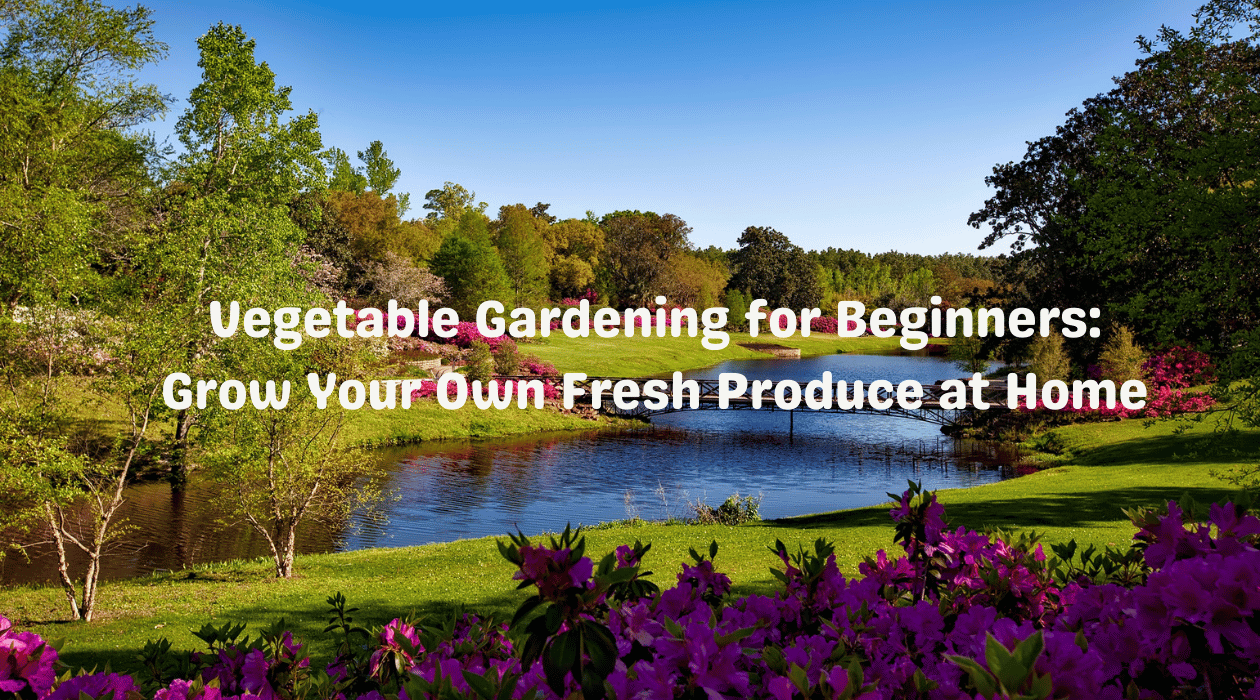There’s nothing quite like harvesting your own homegrown vegetables—tender tomatoes, crisp lettuce, or vibrant carrots fresh from your backyard or balcony garden. Not only does vegetable gardening save money, but it also helps you live a healthier, more sustainable lifestyle.
Whether you have a sprawling backyard or just a few containers on your balcony, this guide will walk you through the basics of starting your own vegetable garden at home.
🌱 Why Start Vegetable Gardening?
Starting a vegetable garden is more than just a hobby—it’s a lifestyle change. Here’s why many homeowners are digging into gardening:
- Healthier Food: Fresh veggies with no harmful pesticides
- Cost Savings: Lower grocery bills
- Sustainability: Reduce your carbon footprint
- Mental Health: Gardening is proven to reduce stress and increase happiness
📍 1. Choosing the Right Spot
The most important factor in vegetable gardening is location. Pick a spot that gets at least 6–8 hours of direct sunlight daily. Avoid overly shady areas unless you’re planting leafy greens like spinach or lettuce.
Pro Tip: Make sure your chosen spot has good drainage to avoid soggy soil.
🪴 2. Decide Between In-Ground, Raised Bed, or Container Gardening
- In-Ground: Great for larger yards. Requires good soil and weed control.
- Raised Beds: Ideal for small spaces and better control over soil quality.
- Containers: Perfect for patios and balconies. Use deep pots for root vegetables.
🧑🌾 3. Best Vegetables for Beginners
Start with vegetables that are easy to grow, fast-growing, and require low maintenance. Here are a few great starter crops:
- Tomatoes – Fast-growing and perfect for containers
- Lettuce – Quick harvest and thrives in partial shade
- Radishes – Grows in just 3–4 weeks
- Carrots – Great in deep pots or loose soil
- Cucumbers – Climbing vines ideal for small trellises
- Spinach – Grows in cool weather and indoors too
🧑🔬 4. Understanding Your Soil
Good soil = good harvest. Use loamy, well-draining soil rich in organic matter. If your native soil is poor, use store-bought garden mix or compost-enriched soil.
Pro Tip: Test soil pH. Most vegetables grow best in slightly acidic to neutral pH (6.0–7.0).
💧 5. Watering Wisely
Vegetables need consistent moisture—especially during germination and flowering. Here’s what to keep in mind:
- Morning watering is best to reduce evaporation
- Avoid overwatering—it can lead to root rot
- Mulch your soil to retain moisture and suppress weeds
🍂 6. Compost and Fertilizer
Feed your plants with organic compost or well-balanced vegetable fertilizer (NPK ratio 10-10-10). Add compost every few weeks to keep the soil nutrient-rich.
🌿 7. Keep Pests Away Naturally
Avoid harsh chemicals. Use these natural remedies to keep pests under control:
- Neem oil spray for aphids and mites
- Eggshells to deter slugs
- Companion planting (e.g., basil with tomatoes) to repel insects
📅 8. Know Your Planting Schedule
Check your USDA Hardiness Zone or local climate calendar to determine the right planting time. Cool-weather crops like peas and spinach do well in spring or fall, while warm-season crops like tomatoes thrive in summer.
🛠️ 9. Tools You’ll Need
Start with basic gardening tools:
- Trowel
- Watering can
- Gardening gloves
- Pruners
- Soil tester (optional but helpful)
🥬 10. Harvest and Enjoy
Harvesting at the right time is key. Don’t wait too long, or the flavor may decline. Most vegetables taste best when harvested young and tender.
Pro Tip: The more you harvest (like lettuce or herbs), the more they grow!
🌼 Final Thoughts
Vegetable gardening is a rewarding journey that doesn’t require a green thumb—just a little patience, some sunlight, and the right guidance. It reconnects you with nature, improves your diet, and brings joy with every harvest.
At Fiora Flux, we’re passionate about helping you create a better home, one garden at a time. Whether you’re planting your first seed or expanding your backyard farm, we’ve got the tips to help you thrive.









